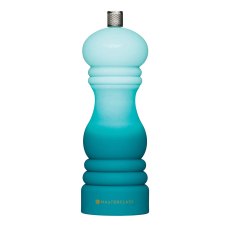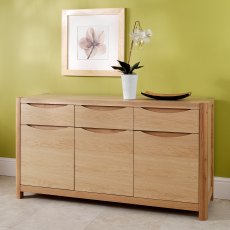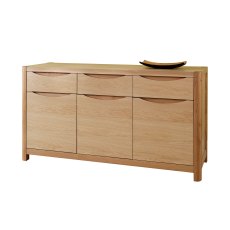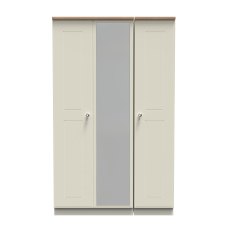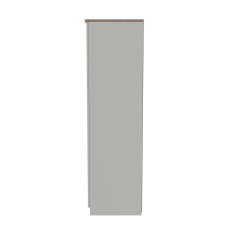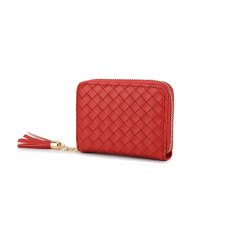Looking after Leather Upholstery – Part 1
Aldiss.com – Norfolk’s largest range of home furnishings
This week’s guest blog is from Glyn Charnock, Owner of Chameleon Cleaning. Glyn is also a Director of the National Carpet Cleaners Association.
Leather is a fantastic natural product. It has been made for thousands of years, and is incredibly versatile. Most of us associate leather with clothing, footwear, bags and upholstery, and all leathers are pretty much the same, right?
WRONG!
Yes, they all start from an animal hide, but there are lots of types of leather, made using different tanning processes and finishes, each designed to suit the purpose it will be used for.
Despite the common belief that leather is “maintenance free”, each type of leather needs to be cleaned and cared for in some way to keep its appearance and make it last. Properly cared for, most types of leather will last for decades.
There are so many types of leather out there that I am just going to look at the leathers most commonly used for upholstery, give some ideas about what type of leather might suit your home and how to care for them. This month I will cover the “natural” leathers – the better quality, more expensive leathers, which are also the most difficult to care for. Next month I will cover the finished leathers which are much more user friendly.
What is Leather Furniture?
To be sold as Real Leather upholstery, and carry the Real Leather symbol, all the contact areas (the parts you touch under normal use) of the furniture must be covered in top grain leather (the outside layer of the hide), with a finish of not more than 0.15mm thickness.
The parts you don’t normally touch like the back and sides, can be covered with split leather (the next layer in from top grain), vinyl, bonded leather, e-leather or anything else that has been made to look like real leather.
Aniline Leather
This is the most natural type of leather, and one of the most expensive.
Made from the best quality animal hides, it shows any natural flaws in the surface like scratches, insect bites and stretch marks. A well trained leather expert may well be able to tell what part of the world the animal came from, what sex it was and even what part of the animal each piece of leather is from, just by looking at it.
Dyed to give it colour, there is no finish applied to the surface of the leather, so it feels soft and luxurious. Warm in the winter, cool in summer, it is a beautiful product.
However, there is a down side.
It is very absorbent, stains and scratches easily, fades in sunlight and is difficult to clean.
If not treated with a suitable protection product It can absorb oils from your body and darken in the areas you touch most, like the ends of the arms and where you rest your head on the back. If you have pets, it will absorb oil from their fur where they sit. Water based stains like drink spills or ring marks from cups are very difficult to remove.
The pictures below are an aniline footstool which was faded and heavily stained. To restore it to an acceptable standard I had to make the colour brighter and richer to hide the stains, but even this didn’t hide all the damage and it wasn’t possible to match it to the original colour due to the nature of the process.
Repairing damage to aniline leathers like cuts and scratches will never be invisible and is often difficult. Fading can be improved by re-dyeing the leather but this may result in a colour change from original, and is a professional only process.
Aniline leather should have a leather protector applied from new to help keep it clean and less susceptible to damage. Regular professional cleaning and protector re-application is recommended.
Semi-Aniline Leather
This looks and feels like aniline leather but has a very thin coat of clear finish applied to the surface to help protect the leather. More user friendly than true anilines, but protecting from new and regular cleaning and protecting is advisable although it will be easier to maintain than a true aniline.
Oily / Waxy Pull Up Leather
These leathers are similar to anilines but have oils or waxes impregnated in to the leather to protect it. When stretched they lighten, but return to their original colour when the tension is released.
They appear to scratch very easily, but gentle rubbing of the area with fingertips will make the “scratches” disappear by moving the oil or wax around inside the leather, unless the scratch has damaged the surface of the leather. Pets should be kept away from this type of leather.
Oily / Waxy pull ups resist water based stains well but can still darken from body oils just like anilines, so protection from new and regular cleaning and protecting is recommended.
Conclusion
Natural leathers like those described above are a beautiful product which will give years of use and enjoyment when placed in the right home and looked after in the correct manner.
Please feel free to contact me if you would like advice on what type of leather suits you best, or for care and maintenance advice. www.chameleoncleaning.co.uk
Next month we will be looking at the more easily cared for leather types.
-
6th November 2013
Recently viewed
Masterclass Green Ombre Salt n Pepper Mill
Price from £7.46
Sevenoaks 3 Door Sideboard
Now £1,599
Elizabeth Triple Mirror Wardrobe
Now £695
Long & Son Red Textured Purse
Now £6.79
